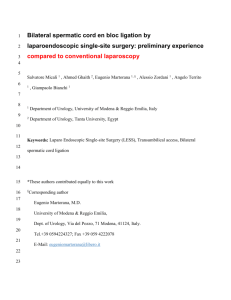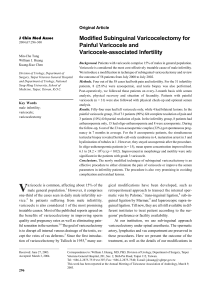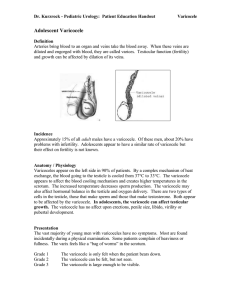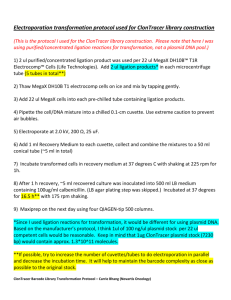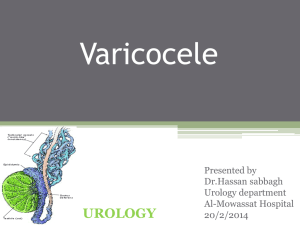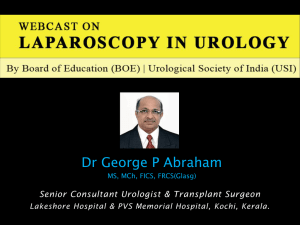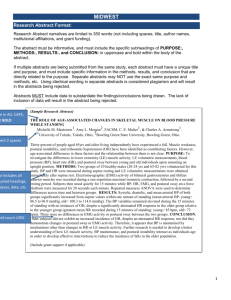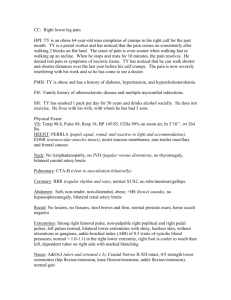Varicocelectomy: Response to Peer Reviewers
advertisement
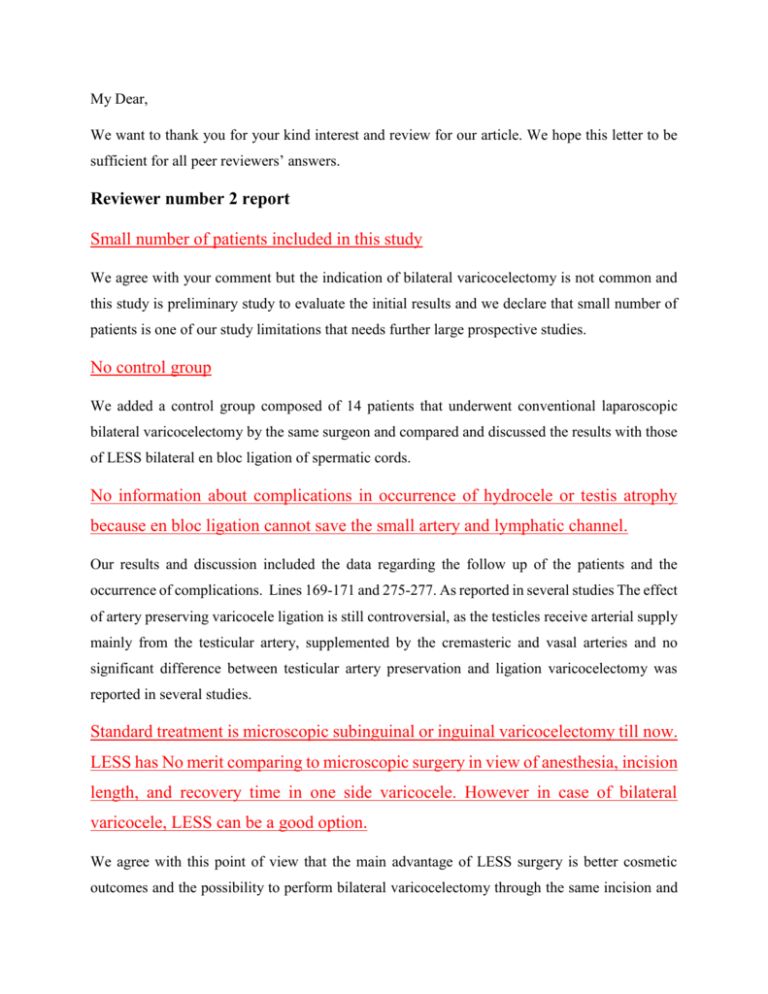
My Dear, We want to thank you for your kind interest and review for our article. We hope this letter to be sufficient for all peer reviewers’ answers. Reviewer number 2 report Small number of patients included in this study We agree with your comment but the indication of bilateral varicocelectomy is not common and this study is preliminary study to evaluate the initial results and we declare that small number of patients is one of our study limitations that needs further large prospective studies. No control group We added a control group composed of 14 patients that underwent conventional laparoscopic bilateral varicocelectomy by the same surgeon and compared and discussed the results with those of LESS bilateral en bloc ligation of spermatic cords. No information about complications in occurrence of hydrocele or testis atrophy because en bloc ligation cannot save the small artery and lymphatic channel. Our results and discussion included the data regarding the follow up of the patients and the occurrence of complications. Lines 169-171 and 275-277. As reported in several studies The effect of artery preserving varicocele ligation is still controversial, as the testicles receive arterial supply mainly from the testicular artery, supplemented by the cremasteric and vasal arteries and no significant difference between testicular artery preservation and ligation varicocelectomy was reported in several studies. Standard treatment is microscopic subinguinal or inguinal varicocelectomy till now. LESS has No merit comparing to microscopic surgery in view of anesthesia, incision length, and recovery time in one side varicocele. However in case of bilateral varicocele, LESS can be a good option. We agree with this point of view that the main advantage of LESS surgery is better cosmetic outcomes and the possibility to perform bilateral varicocelectomy through the same incision and thus short operative time, hospitalization and early return to normal activity as reported in lines 214-216, 218-222, 232-234, and 249-251. Reviewer number 4 report In this manuscript the author(s) have done spermatic cord ligation rather than internal sperm vein ligation. They concluded there is no complications like testis atrophy,lymphocele , hydrocele and recurrenc. First of all for better understanding and decision making more patients & long term follow up is necessary. Our experience showed that even spermatic vein ligation has complications like testis atrophy, recurrent and hydrocele. Our RCT showed even conventional bilateral laparoscopy has these complication. We agree that the number of patients is small but the indication of bilateral varicocelectomy is not common and this study is a preliminary study to evaluate the initial results and we declare that small number of patients is one of study limitation that needs further large prospective studies. For follow up, our initial follow up protocol was 3 months after surgery but now we had also 6 and 12 months after surgery and all patients did not develop hydrocele nor testicular atrophy as reported in lines 275-277. Varicocele has 3 grades mild, moderate and sever. According scrotal examination in standing position, grade 3 is visible veins (bag of worms) without palpation & valsalva maneuvers. Grade two is visible vein on scrotum by palpation without and Grade I. consisted visible veins on scrotum by palpation and Valsava maneuvers. As far as my knowledge is concern there are five grads for varicocele in Italy by color Doppler sonography. Relation of this classification with standard classification is necessary. Varicocele is classified to sub clinical and clinical varicocele. Clinical varicocele is classified into G1. Mild, G2. moderate, and G3. Severe. While the Doppler classification is mainly used for subclinical varicocele classification and is classified into 5 grades according to the site of dilated veins and presence of reflux. In our study, one patient that had Grade 4 varicocele by Doppler on the left in group A and one patient that had Grade 4 varicocele by Doppler on the left in group B. Reviewer number 3 report At first, is it typical to use the term „spermatic cord ligation“for varicocelectomy? This term we used to express our technique and the term en bloc or en masse ligation of spermatic cord is used to describe non selective varicocelectomy technique. The authors conclude that LESS is advantage over conventional laparoscopic and open surgeries. But there are no control group in the present study. Without control group you cannot conclude these points. We added a control group composed of 14 patients that underwent conventional laparoscopic bilateral varicocelectomy by the same surgeon and compared and discussed the results with those of LESS bilateral en bloc ligation of spermatic cords. In the present study were only included 10 patients. With this small number of patients it is advisable to conclude very cautious. We agree that the number of patients is small but the indication of bilateral varicocelectomy is not common and this study is a preliminary study to evaluate the initial results and we declare that small number of patients is one of study limitation that needs further large prospective studies. The indications for bilateral varicocelectomy are very rare. Of course the indication of bilateral varicocelectomy is not common and this one of reasons of small number of patients in this study. The authors said that an indication for the procedure was bilateral chronic pain. I miss the results, whether it was better or not after 3 months. The results of testicular pain on follow up is reported in lines 174-175.

